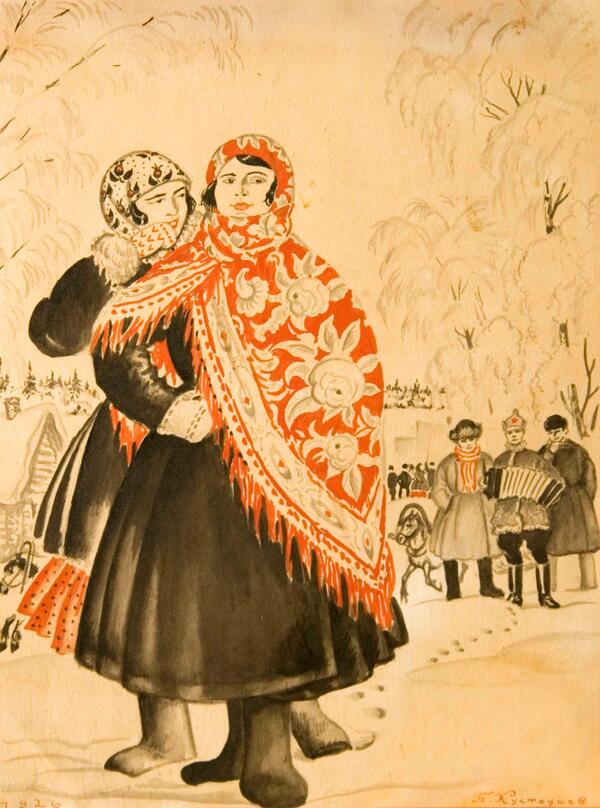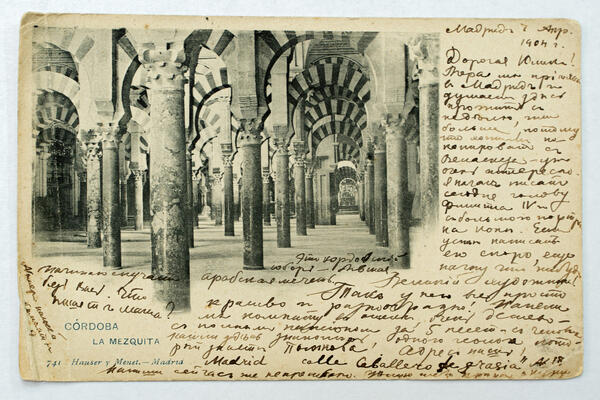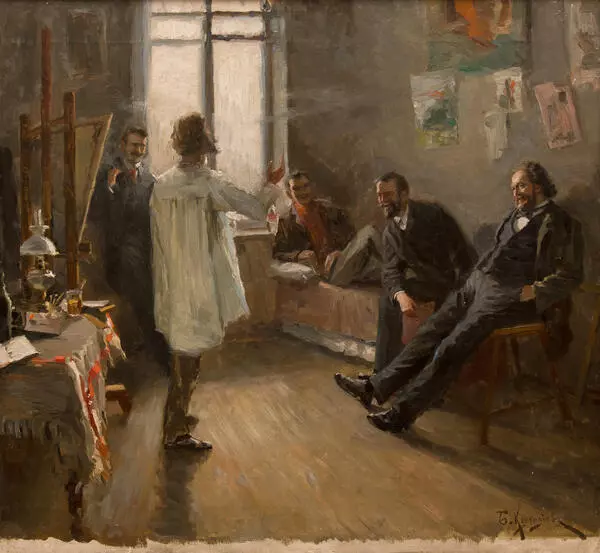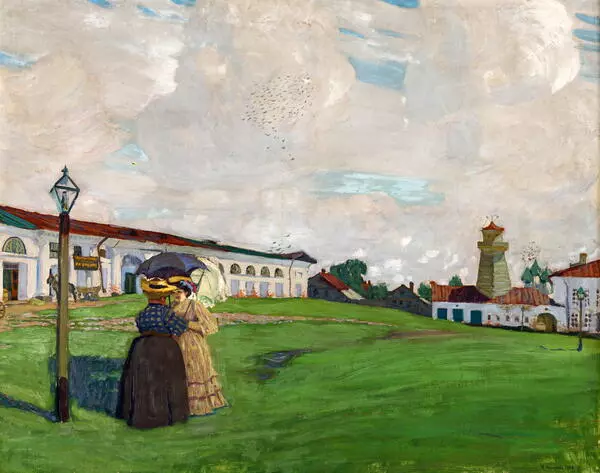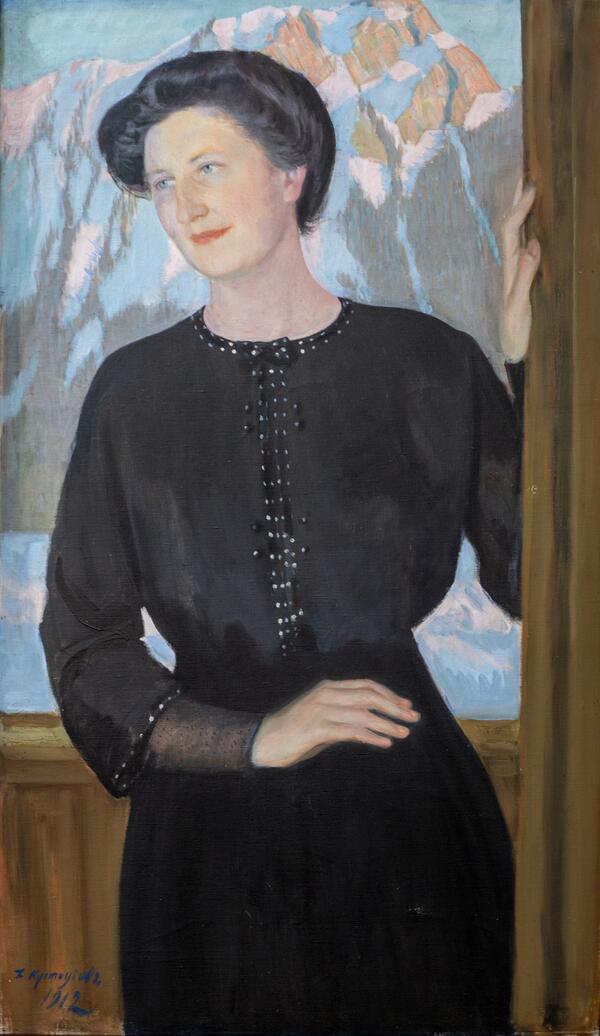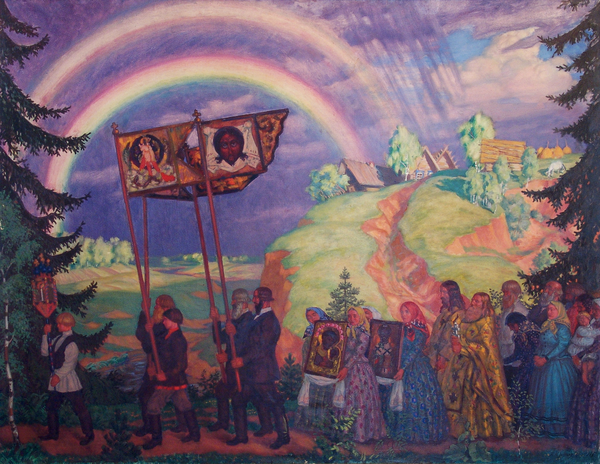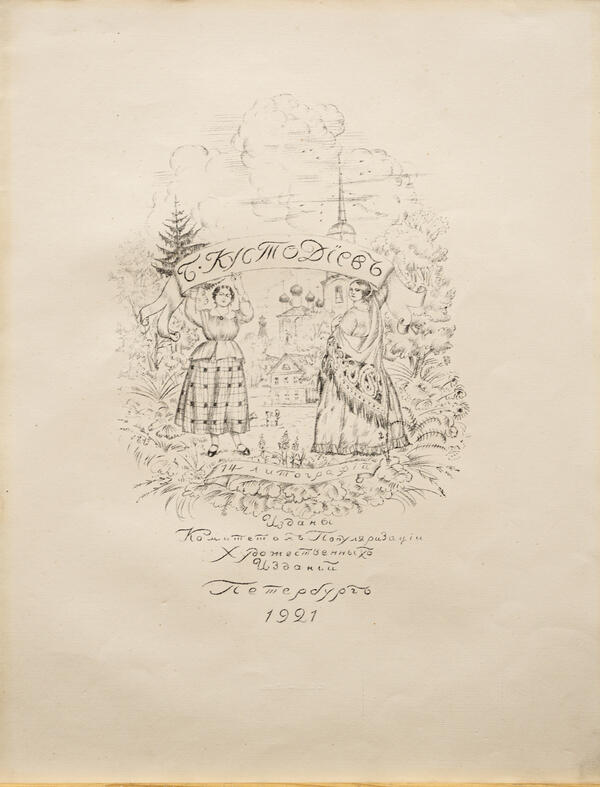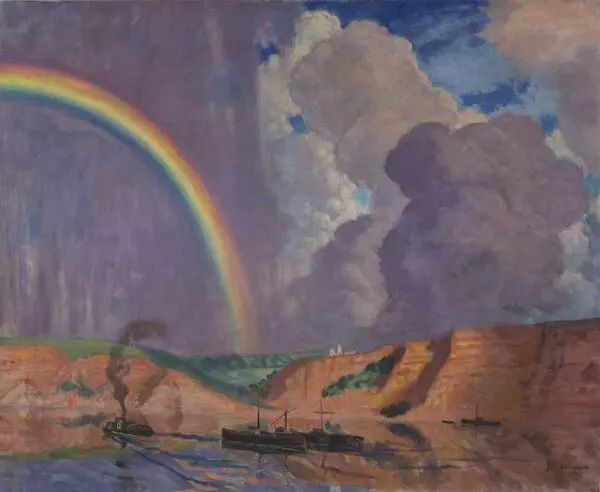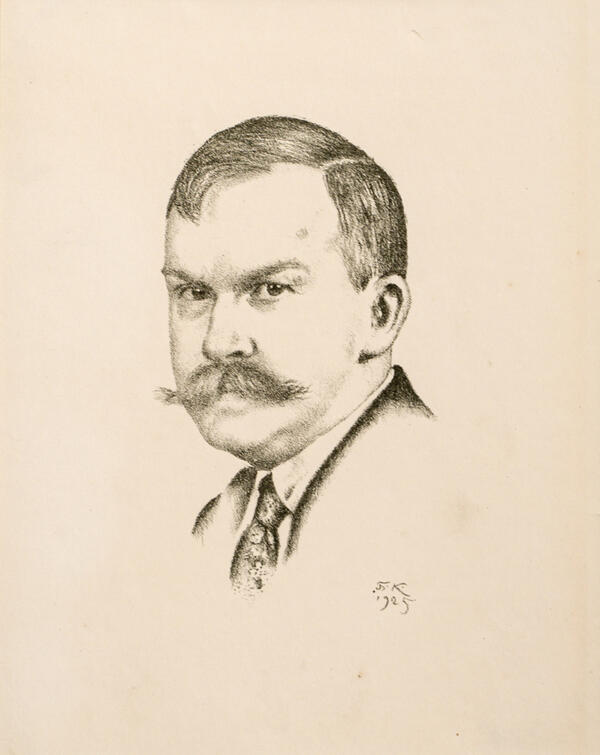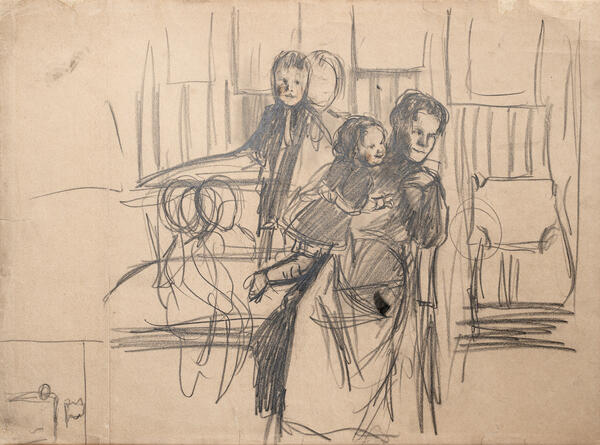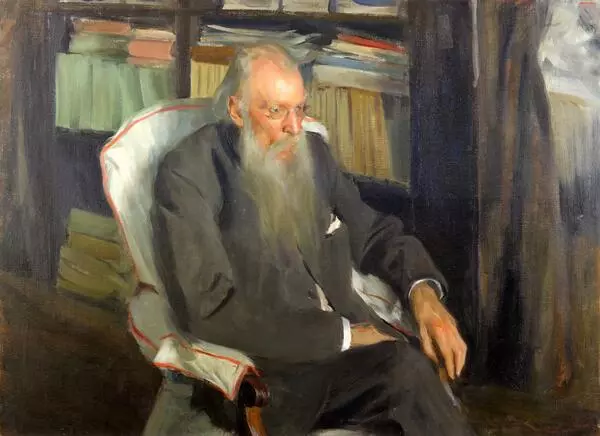The work of Boris Kustodiev (1878–1927) is presented in the Tarusa Art Gallery by his late watercolor ‘The Festivities in the Village’, created just a year before the artist’s death. Having started his career as a portrait painter, he created genre paintings, worked as a cartoonist and illustrator, and a theater artist. As a student of Ilya Repin, he was also influenced by Valentin Serov, especially in portraiture. Nevertheless, Kustodiev managed to create his own recognizable unique style, not only in the manner of depiction, but also in the choice of subjects.
He embodied scenes from the life of his native bourgeois environment of the Russian merchants, sang the images of merchants as the ideal of female beauty. He reflected the extravaganzas of Maslenitsa festivals, fairs, tea parties, creating images close to popular prints. Kustodiev’s creative optimism and activity were also manifested in later works, for example, in the 1926 watercolor ‘The Festivities in the Village’. Two rural beauties are depicted, wrapped in fur coats and shawls, against the background of a landscape motive. In the background there is a group of standing guys, among them is an accordion player in Budenovka.
The artist chose a monochrome scale for this composition. He used red as an accent to create patterns on shawls and girls' clothes. Despite the laconicism of expressive means, Kustodiev remained attentive to the details, in which his graphic talent manifested itself. The rosary and voluminous patterns of shawls create a certain contrast with the deliberately pale and generalized background. Admiration for the beauty of life was peculiar to Kustodiev, and it was especially expressed in his glorification of female beauty. Even within the framework of a small watercolor, he manages to present full, attractive female images. The emotional state of the heroes is also conveyed - a feeling of ascent and a bright look into the future of the NEP (The New Economic Policy) period.
In an amazing way, Kustodiev managed to preserve his creative uniqueness for a long time, recreating the life of first pre-revolutionary and then Soviet Russia.
He embodied scenes from the life of his native bourgeois environment of the Russian merchants, sang the images of merchants as the ideal of female beauty. He reflected the extravaganzas of Maslenitsa festivals, fairs, tea parties, creating images close to popular prints. Kustodiev’s creative optimism and activity were also manifested in later works, for example, in the 1926 watercolor ‘The Festivities in the Village’. Two rural beauties are depicted, wrapped in fur coats and shawls, against the background of a landscape motive. In the background there is a group of standing guys, among them is an accordion player in Budenovka.
The artist chose a monochrome scale for this composition. He used red as an accent to create patterns on shawls and girls' clothes. Despite the laconicism of expressive means, Kustodiev remained attentive to the details, in which his graphic talent manifested itself. The rosary and voluminous patterns of shawls create a certain contrast with the deliberately pale and generalized background. Admiration for the beauty of life was peculiar to Kustodiev, and it was especially expressed in his glorification of female beauty. Even within the framework of a small watercolor, he manages to present full, attractive female images. The emotional state of the heroes is also conveyed - a feeling of ascent and a bright look into the future of the NEP (The New Economic Policy) period.
In an amazing way, Kustodiev managed to preserve his creative uniqueness for a long time, recreating the life of first pre-revolutionary and then Soviet Russia.

